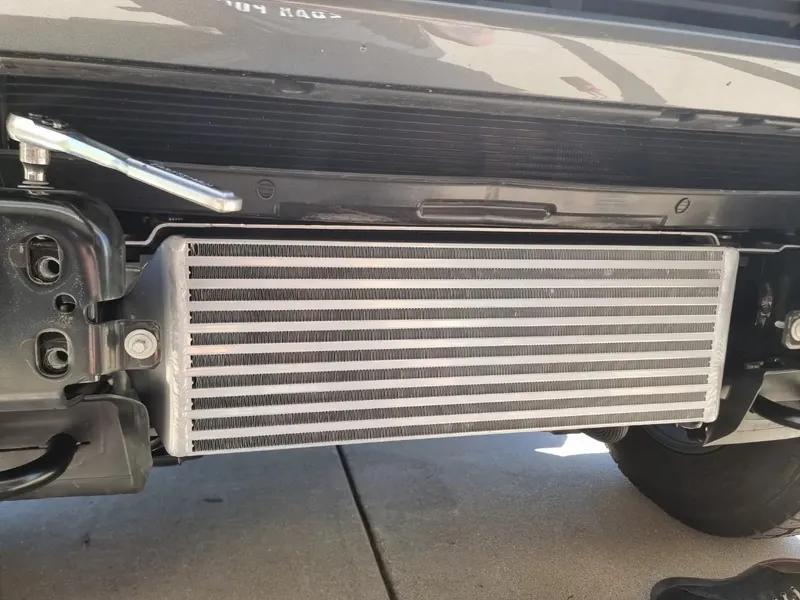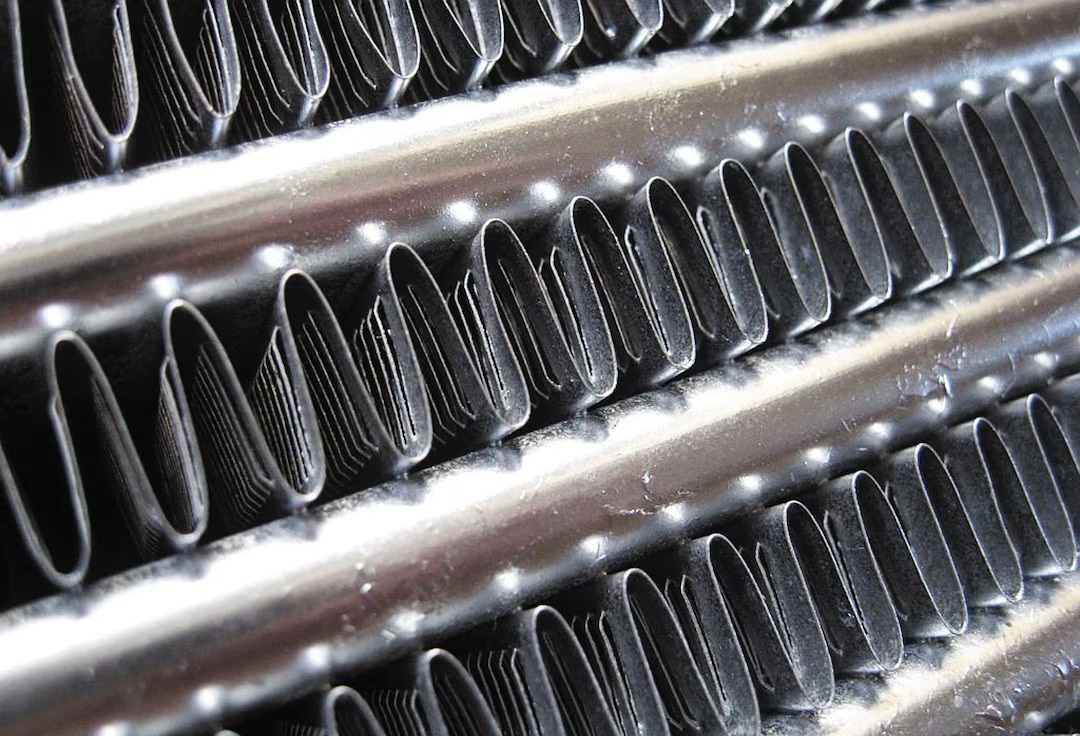Once used only on diesel vehicles, turbochargers have become a staple for performance and efficiency with both petrol and diesel engines. A turbo or turbocharger is a turbine with fans inside that rotate at high speeds to bring in compressed air.
This compressed air is drawn in from the outside and is sent to each cylinder in the engine. The air is used for the combustion process which involves the use of fuel and a spark (if it's a petrol engine). Turbocharged engines are found on almost every vehicle nowadays be it a luxury sedan or an off-road capable rig like Ford's Bronco. This is why the use of another set of components is a must nowadays.
Intercoolers

Parts
The intercooler is there to keep the turbo cool from all that spooling and release of hot air. This is done with the help of coolant and a handful of other components. No matter the type of intercooler for Ford Bronco you go for it will be made of an intercooler, rubber hoses, end tanks, core, and coolant reservoir.
How They Work
The way an intercooler works is by having the coolant in the reservoir moved around through the hoses so that the coolant gets to the turbo. As the coolant passes it takes off some of the heat from it and when it comes to your Bronco intercooler, the air hitting it cools down the liquid. This can happen with the help of the fan too but mostly when the car is stationary.
Types of Intercoolers
Air-to-Air
An air-to-air Bronco intercooler is one that keeps the turbo cool purely by providing cool air to it. There's no liquid component to it which makes it inferior to a system that makes use of coolant or even water for that matter.
Air-to-Water
An air-to-water or, in the case of most turbocharged engines, coolant, intercooler is a more efficient system that keeps the turbo cool at much higher temperatures. Granted it's a more complex system but it's also a more common one because it's able to cool down the turbo no matter what.
That is as long as both the intercooler and turbocharger are of adequate sizes. Too small of an intercooler for Bronco or too big of a turbo is going to lead to overheating issues and may cause long-term damage to the turbo and even the engine if you keep it running for long enough.
Tube-and-Fin
A tube-and-fin Ford Bronco intercooler is found on most stock vehicles since the design of the intercooler's core is capable enough to satisfy stock power figures. This is also a more affordable design but it can suffer from heat soak which is something that is not as easily achieved with a bar-and-plate intercooler.
Bar-and-Plate
Bar-and-plate intercoolers have a core that is able to reduce the temperature of the coolant much quicker thanks to the material being thinner. This helps improve heat transfer but despite being made of thinner material, the core makes for a heavier intercooler. That's because the surface area of the core is much larger however it makes for a more performance-oriented solution.
Important Factors of Intercoolers

Core
The core, even if it's a bar-and-plate one, still makes use of fins. The density and design of the fins also affect its cooling capabilities. The use of a louvred straight fin design makes for a more entry-level solution while one with an offset fin design offers a greater surface area and therefore makes for a more capable solution. Also, the higher the number of fins the better the heat exchange but if you overdo it you can end up restricting airflow.
End Tanks
The end tanks are the tanks that hold coolant on the sides of the core. These can be made of plastic or the same material the core is usually made of, aluminium. Intercoolers made of plastic end tanks are more affordable but they don't last as long as those made of aluminium. Aluminium end tanks add more weight but if you're making your Bronco more of a performance monster, then metal is the way to go. You should also consider going for cut-and-weld tanks rather than stamped ones in this case, as they're more durable.
Placement
Where you place your new Ford Bronco intercooler matters as it affects how it functions. For instance, a TMIC or top-mount intercooler goes on top of the engine and although it makes for a cool-looking hood, as it needs a scoop for air to hit it, heat soak is their biggest enemy.
SMIC or side-mount intercoolers are two separate units that go on the corners of the front bumper in front of the wheels. These are not common since they have a small surface area and thus don't perform as well
FMIC or front-mount intercoolers are the best in terms of their cooling performance but they are also the largest as they sit behind the front bumper.